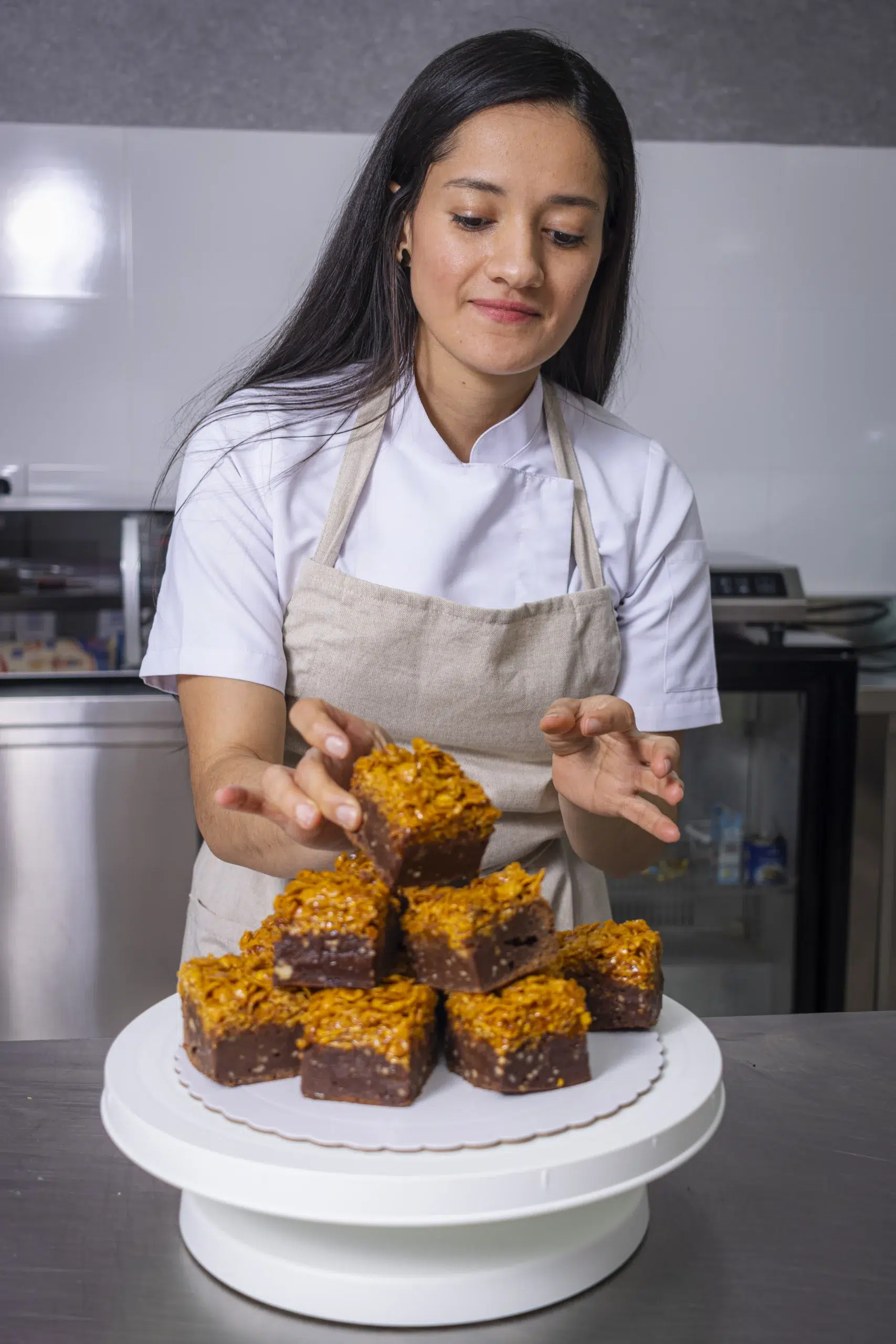Introduction to Cooking Beef Shank
What is Beef Shank?
The Importance of Slow Cooking
To transform the tough fibers of the beef shank into a tender feast, slow cooking is paramount. This method allows the tough collagen in the muscle to break down into gelatin, infusing the meat with moisture and making it fall-apart tender. The process might take a while, but the result is a deeply savory dish that’s worth the wait.
Stay tuned for Part 2, where we will dive into the preparations necessary before cooking the beef shank to maximize its flavor and tenderness.
Preparing Beef Shank for Cooking
Selecting the Right Cut
Choosing the right beef shank is essential for a successful dish. Look for pieces that are well-marbled with fat and exhibit a deep red color, signs of freshness and quality. The presence of marbling can significantly enhance the flavor as the fat renders down during the cooking process.
Marinating and Seasoning
Before cooking, marinating the beef shank can add an extra layer of flavor and aid in tenderization. A simple marinade might include olive oil, garlic, herbs, and a touch of acidity from lemon juice or vinegar. Rub this mixture all over the shank and let it sit in the refrigerator for at least a few hours, or overnight if possible, to allow the flavors to penetrate deeply.
Searing the Shank
Before the slow cooking begins, searing the beef shank is a critical step. Heat some oil in a heavy skillet over high heat. Once hot, add the shank, browning it on all sides to create a rich, caramelized crust. This process not only enhances the flavor but also helps to seal in the juices, ensuring the meat remains moist and flavorful throughout the cooking process.
In Part 3, we’ll explore the various cooking methods that can be employed to make the beef shank tender, focusing on braising and slow cooking techniques. Stay tuned for detailed steps and temperature settings to achieve the perfect tenderness
Exploring Different Cooking Methods
Braising Beef Shank
Braising is a highly effective method for transforming tough beef shank into a succulent dish. Here’s the process:
- Preparation: Place the browned shank into a deep, heavy pot.
- Adding Liquids: Add broth until it comes halfway up the meat, incorporating a mix of aromatic vegetables like onions, carrots, and celery for added flavor.
- Slow Cooking: Cover the pot and let it simmer on low heat. This gentle, prolonged cooking allows the meat’s tough fibers and collagen to melt away, leaving it delightfully tender.
Slow Cooking in a Crock-Pot
For those preferring a more hands-off approach, slow which cooking methods are best for shankin a Crock-Pot offers an excellent alternative:
- Setup: After searing, transfer the shank to the slow cooker.
- Adding Ingredients: Add similar broth and vegetables as with braising.
- Cooking Time: Set the device to low and cook the shank for 8-10 hours. This method provides a consistent, low heat that ensures the shank becomes tender without needing constant attention.
Both Cooking Techniques are designed to break down the shank’s tough tissues over several hours, making the meat incredibly tender and flavorful. Braising allows for more flavor control, while the slow cooker is more convenient for those with busy schedules.
In Part 4, we’ll delve into the specifics of cooking times and temperatures to achieve perfectly tender beef shank. We’ll discuss how to properly use thermometers to monitor the meat’s internal temperature for ideal results.
Optimal Cooking Time and Temperature for Tender Beef Shank
Determining the Ideal Cooking Time
The key to achieving perfect tenderness in beef shank lies in the cooking duration. Typically, braising in a covered pot over low heat should continue for about 2.5 to 3 hours. However, the exact time can vary based on the size and thickness of the shank. Using a slow cooker, the process can extend up to 8-10 hours on a low setting, which is ideal for those who prefer to set up their meal early and let it cook throughout the day.
Temperature Guidelines for Perfection
Maintaining the right temperature is crucial when cooking beef shank:
- Braising: Keep the oven or stovetop at a low simmer, around 275°F to 325°F. This range allows the collagen in the beef shank to break down effectively without causing the meat to dry out or toughen.
- Slow Cooking: Set your slow cooker on low to ensure even and gentle cooking. The consistent low heat helps soften the meat’s fibers, making it fork-tender.
Using a Meat Thermometer
To ensure the beef shank reaches the ideal tenderness, it’s advisable to use a meat thermometer. The internal temperature of the shank should reach at least 195°F to 205°F. At this range, the collagen has sufficiently broken down to give that melt-in-your-mouth texture. Always insert the thermometer into the thickest part of the shank to get an accurate reading.
In Part 5, we will explore common issues encountered while cooking beef shank, including why it might remain tough and how to adjust cooking times and temperatures to rectify this. Stay tuned for tips and solutions to help you master the art of cooking this challenging yet rewarding cut of meat.
Common Issues When Cooking Beef Shank
Why Is My Beef Shank Still Tough?
Even after hours of cooking, beef shank can sometimes remain tough. This issue typically arises from not cooking the meat long enough for the collagen to fully break down into gelatin, which is crucial for tenderizing the shank. Another common mistake is cooking at temperatures that are too high, which can cause the meat fibers to tighten and moisture to evaporate too quickly.
Adjusting Cooking Times and Temperatures
If you find that your beef shank isn’t becoming tender:
- Extend the Cooking Time: Allow more time for the meat to cook at a low temperature. This can be especially necessary in larger or particularly tough cuts.
- Check the Cooking Temperature: Ensure the heat is low enough to simmer the meat gently. In an oven, this might mean setting the temperature between 275°F and 325°F. On a stovetop, it should be just enough to maintain a gentle simmer.
Tips for Ensuring Perfect Tenderness
- Low and Slow: Remember, the key to tenderizing tough cuts like the beef shank is a long, slow cooking process. Patience is your best tool here.
- Keep it Covered: Make sure the cooking pot is tightly covered. This helps to retain moisture and steam, which contributes significantly to breaking down the tough fibers of the shank.
- Use Enough Liquid: The braising liquid should come at least halfway up the meat. This helps maintain a moist environment around the shank, facilitating even cooking and flavor infusion.
In the next part, we will address frequently asked questions about cooking beef shank, providing you with additional insights and expert advice to help refine your cooking technique and troubleshoot common problems. Stay tuned for practical answers that will enhance your culinary experience with beef shank.
Storing and Reheating Beef Shank
Proper Storage Techniques
To preserve the quality and safety of your cooked beef shank, it’s important to store it correctly:
- Cooling Down: Allow the beef shank to cool to room temperature before storing. However, do not leave it out for more than two hours to prevent bacterial growth.
- Refrigeration: Place the beef shank in an airtight container and refrigerate. When stored correctly, it can remain fresh for up to three to four days.
- Freezing: For longer storage, freeze the beef shank in airtight containers or heavy-duty freezer bags. It can be stored frozen for up to 3 months without significant loss of quality.
Tips for Reheating
Reheating beef shank properly ensures that it remains tender and delicious:
- Oven Method: Reheat in a covered dish in an oven preheated to 325°F. Add a little broth or water to prevent drying out, and heat until the internal temperature reaches 165°F.
- Stovetop Method: Simmer gently in a saucepan with some of its juices or added broth. This method helps retain moisture and enhances the meat’s flavor.
By following these storage and reheating tips, you can enjoy your beef shank meal multiple times while maintaining its taste and quality. This section ensures that nothing goes to waste and you maximize the value of your deliciously cooked beef shank.
FAQs About Cooking Beef Shank
How Long Should You Cook Shank to Ensure It’s Tender?
The ideal cooking time for beef shank can vary depending on the size of the cut and the cooking method used. Generally, for braising in an oven, expect to cook the shank for about 2.5 to 3 hours at 325°F. If using a slow cooker, setting it on low for 8 to 10 hours is typically sufficient.
Can Beef Shank Be Overcooked?
While beef shank is forgiving when it comes to long cooking times, it is still possible to overcook it, especially if temperatures are too high. Overcooking can lead to dryness, even if the meat is tender. Monitoring the meat with a thermometer and using consistent low heat are key to avoiding this issue.
What Are the Best Herbs and Spices for Beef Shank?
Beef shank pairs well with robust herbs and spices due to its rich flavor. Rosemary, thyme, and bay leaves are classic choices. For spices, consider using black pepper, paprika, or a hint of clove for a deeper flavor profile.
How Can You Tell When Beef Shank is Perfectly Cooked?
Beef shank is perfectly cooked when it is so tender that it almost falls apart on its own. A fork should easily slide into the meat with little resistance, and the internal temperature should have reached at least 195°F to 205°F, indicating that the collagen has transformed into gelatin.
In the next section, we will wrap up our discussion with some final thoughts and serving suggestions to help you make the most out of your perfectly cooked beef shank. Stay tuned for creative ideas on how to serve this delectable dish.
Conclusion and Serving Suggestions
Final Thoughts on Cooking Beef Shank
Mastering the art of cooking beef shank requires patience and attention to detail. By understanding the nuances of slow cooking and temperature control, you can transform this tough cut into a tender, flavorful dish. Remember, the key to success lies in maintaining a low, steady heat and giving the meat plenty of time to break down and absorb flavors.
Creative Serving Ideas
Once your beef shank is tender and ready, there are several ways to serve it that can enhance your dining experience:
- Classic Plating: Serve the beef shank over a bed of creamy mashed potatoes or alongside buttery polenta. Drizzle the rich, reduced cooking juices over the top for added flavor.
- Innovative Twists: Shred the tender Meat and use it as a filling for hearty tacos or enchiladas. Complement with a sprinkle of fresh cilantro and a squeeze of lime for a fusion of flavors.
- With Sides: Pair the beef shank with roasted vegetables, such as carrots and parsnips, which will absorb the meat’s savory juices. A side of crusty bread is perfect for mopping up the delicious sauce.
Wine Pairing and Non-Alcoholic Alternatives
To elevate your meal further, consider pairing the beef shank with a robust red wine that complements its rich flavors, such as a Shiraz or a Cabernet Sauvignon. For a non-alcoholic option, a rich beef broth or a dark grape juice can be equally satisfying, enhancing the meaty flavors of your dish.
By following these guidelines and tips, you’ll not only perfect the cooking of beef shank but also turn it into a meal that’s sure to impress. Whether you’re serving it at a formal dinner or as a comforting meal on a chilly evening, beef shank promises a deeply satisfying culinary experience.











